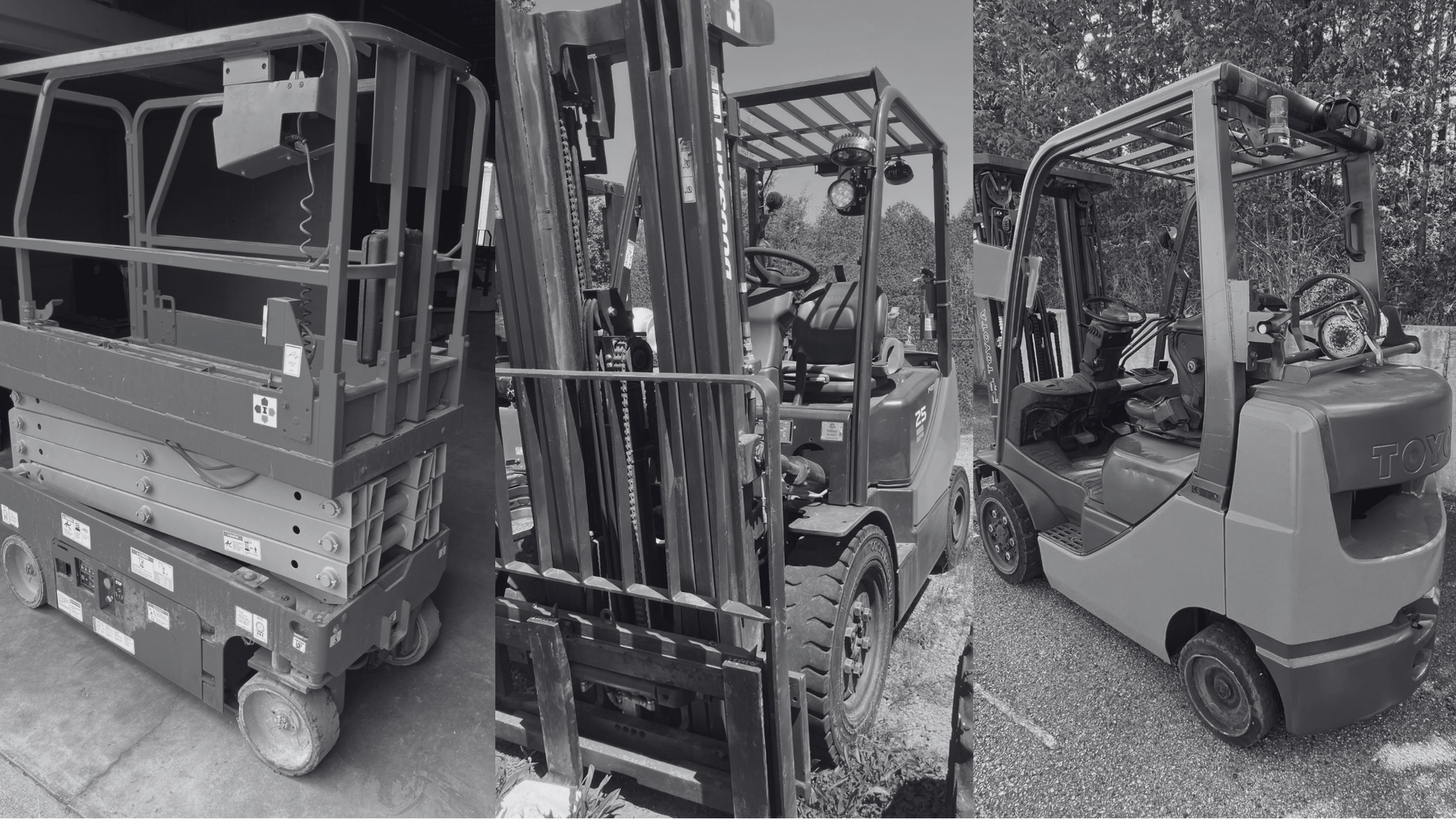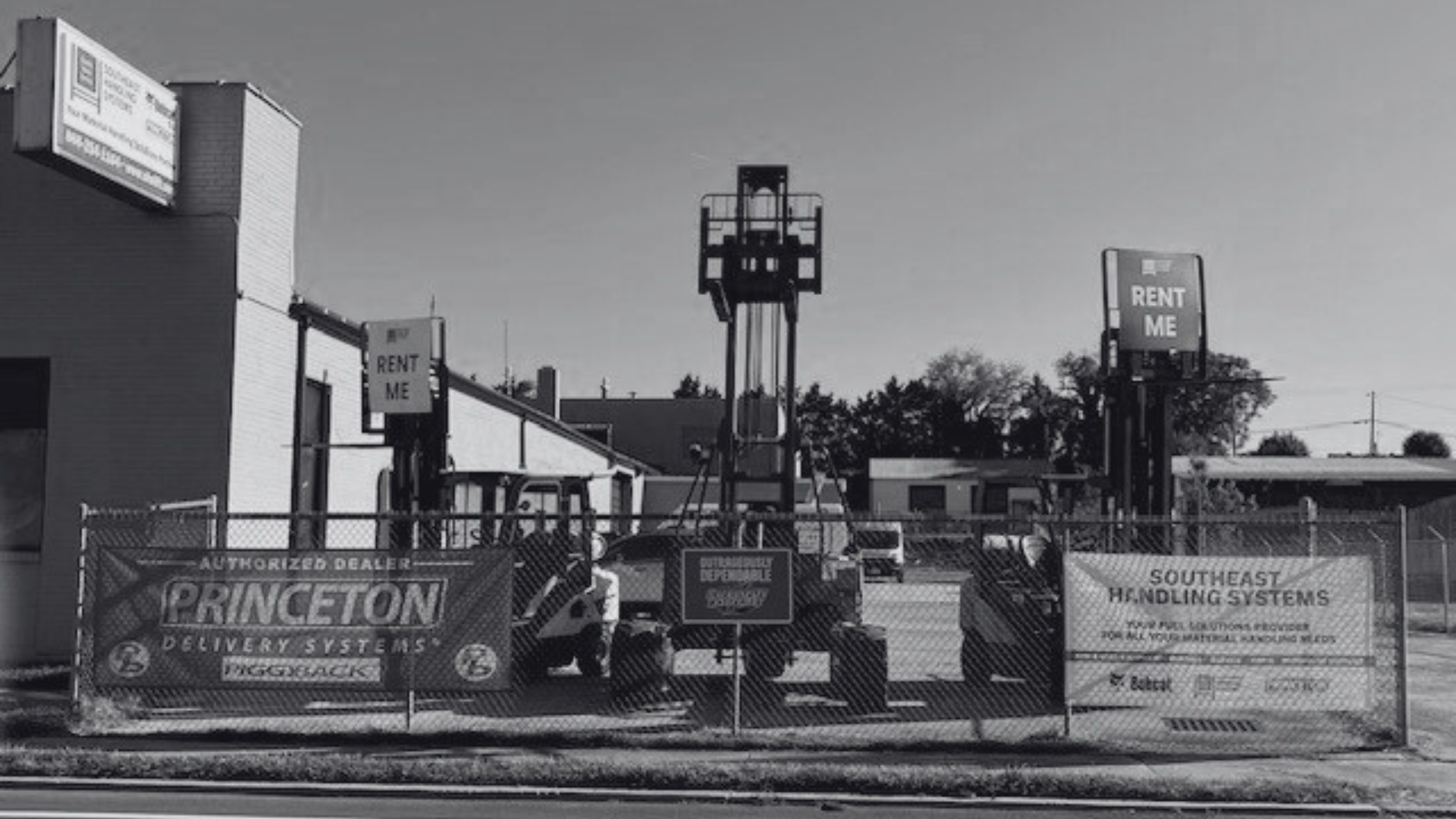Minimize Risks & Enhance Safety
Forklifts are vital for warehouse and job site operations, but when used improperly, they can be a serious safety hazard. Each year, thousands of forklift-related incidents occur—many of them preventable with the right training, equipment, and awareness. Below are some of the most common forklift accidents and how to prevent them on your site.
1. Tip-Overs
What Happens:
A forklift can tip forward or sideways due to turning too quickly, carrying an unbalanced or oversized load, or operating on uneven surfaces.
How to Prevent It:
- Always follow the manufacturer’s load capacity.
- Slow down when turning.
- Keep loads low and balanced.
- Never operate on uneven or sloped surfaces unless the equipment is rated for it.
- Wear your seatbelt to stay safely in the cab during a tip-over.
2. Pedestrian Collisions
What Happens:
Pedestrians can be struck by a forklift in high-traffic areas, blind spots, or when operators aren’t aware of their surroundings.
How to Prevent It:
- Use horns at intersections and blind corners.
- Maintain clear, designated pedestrian and forklift zones.
- Use mirrors, warning lights, and audible alarms.
- Train both operators and pedestrians on awareness and safe movement protocols.
3. Falling Loads
What Happens:
Improperly secured or oversized loads can fall, causing injury or damage.
How to Prevent It:
- Inspect and secure loads before lifting.
- Don’t exceed capacity.
- Tilt the mast back slightly while traveling.
- Use the proper attachment for the load type.
4. Improper Use of Equipment
What Happens:
Using the forklift for tasks it's not designed for—such as lifting people without an approved platform or operating without training—can lead to serious accidents.
How to Prevent It:
- Only certified operators should use forklifts.
- Use aerial lifts or approved personnel platforms to elevate people.
- Provide regular refresher training and monitor for unsafe behavior.
5. Crushed by Forklift or Between Objects
What Happens:
Operators or nearby workers can get pinned between the forklift and racks, walls, or other machines.
How to Prevent It:
- Always be aware of clearances.
- Stop and check surroundings before reversing.
- Never walk behind a moving forklift.
- Use spotters in tight spaces.
Safety Starts With Awareness
Understanding the most common forklift accidents—and how to avoid them—is key to keeping your team safe and your operations running smoothly. Forklift Safety Month is a great time to evaluate your training programs, safety procedures, and equipment condition.
For more information on forklift safety training, inspections, or maintenance plans, contact Southeast Handling Systems at 866-254-1164 or email contacts@shslift.com.




